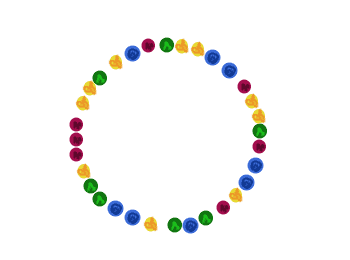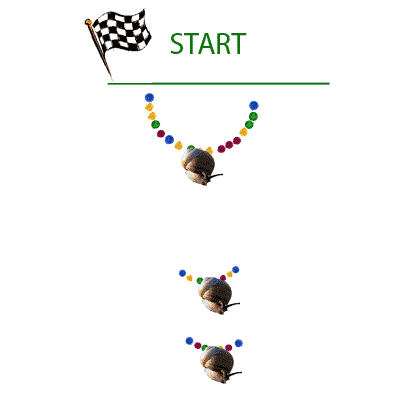Learning Outcomes
After completing this module you should be able to:
- Describe the use of restriction enzymes to cut plasmid DNA in smaller pieces (fragments)
- Explain how separation of DNA fragments in gel electrophoresis is based on their size
- Analyse and interpret experimental data obtained from gel electrophoresis of plasmids
Three thieves and a beaded necklace
Once upon a time… there were 3 thieves. They got to arguing about how to divide up their booty – a single long necklace made of four different kinds of beads. Not being particularly smart, they could not figure out how to divide it up evenly. Finally they agreed simply to cut it apart every time there were two blue beads in a row.

Since this happened exactly three times, the result was that the necklace got broken into three pieces. But were the pieces all the same size? Not being very smart, they couldn’t figure this out, until a passing pickpocket suggested they could attach each piece to a snail, put all three snails on a starting line, and see which snail went the farthest – that snail obviously had the shortest piece:

So that’s what the three thieves did, and they found that (of course) the pieces of the necklace were not the same length. At this point the thieves were tired of new and creative solutions and resorted to their usual method, a fistfight, while the pickpocket walked off with all three snails.
What is the moral of this thinly disguised tale? Hopefully you’ve already read about plasmids, restriction enzymes, and gel electrophoresis. If not, do that now…
Copyright University of Maryland, 2007
You may link to this site for educational purposes.
Please do not copy without permission
requests/questions/feedback email: mathbench@umd.edu